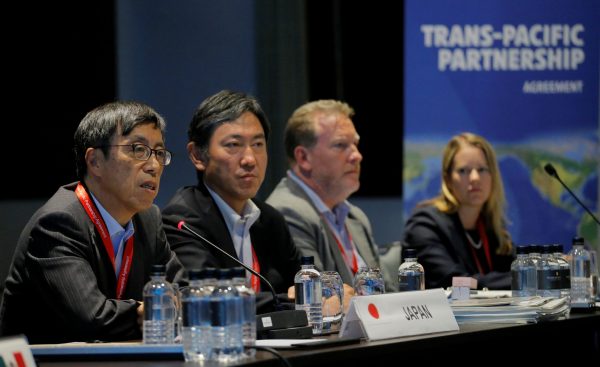The renewed push for an adjusted TPP was given added impetus by the re-election of the Abe government in Japan, which had strongly endorsed the trade pact in its previous term. But the election of a Labour coalition government in New Zealand has raised fresh questions as to what Wellington’s revised TPP position will be, with new Prime Minister Jacinda Ardern having expressed doubts over TPP limits on New Zealand’s proposed foreign property buyer constraints.
So what are the options? Keeping the original 2015 Agreement intact is not on the table — all of the original mechanisms for entry into force required US participation. The simplest approach would be to renegotiate the TPP with a set of new signatories — the original 12 minus the United States. TPP 2.0 would then enter into force once all of the 11 members domestically ratify the agreement.
An alternate way to make the agreement binding could also be retained from the original TPP — the endorsement of at least six original signatories accounting for at least 85 per cent of the total GDP of TPP states. This would make Japan the dominant economy and the pivotal signatory given that its 2016 GDP was US$4.94 trillion — more than three times that of the next major signatory, Canada, at US$1.53 trillion. Under this alternative, all that would be required for entry into force would be for Japan plus two other key economies such as Canada, Australia or Mexico to sign on as well as three other states to satisfy the minimum threshold of six parties.
Another complicating factor is the desire to keep the door open for the United States to rejoin the TPP at some point in the future. It will be necessary to ensure some flexibility so that a mechanism exists for non-member economies to join, which could in the future extend not only to the United States but also potentially to Indonesia.
So what would the trade benefits be for countries entering into a TPP 2.0? The original TPP was not negotiated as a ‘hub and spoke’-type free trade agreement, whereby one hub country enjoys trade privileges with each spoke country but spoke countries do not share the same trade privileges with each other. Rather, each original country committed to reducing various barriers of trade with all other parties, including significant reductions in tariffs and restrictions on cross-border supply of services.
So even without US participation there are trade advantages for each original TPP member to abide by their original commitments. Yet improved access to the US domestic market was a critical drawcard, and the United States greatly influenced the trade concessions that were agreed upon. It is extremely unlikely that the remaining TPP members would be prepared to offer the same commitments without access to the lucrative US market.
This will necessitate renegotiation of many parts of the TPP, including the tariff schedules which set out a binding upper tariff that can be applied on imported goods. For many goods, this was set at zero.
Japan and Australia are strongly pushing for an agreement on TPP 2.0. To achieve this in a way that leaves the door open for future US engagement, some concessions insisted upon by the United States (such as strict intellectual property provisions that go beyond WTO obligations) could be suspended rather than eliminated. Such a suspension would possibly alleviate Vietnam’s concerns, where it has been suggested that those provisions may increase the cost and decrease the availability of medicines. But given the United States’ strong stance on intellectual property protection, these provisions would inevitably be re-enlivened if the United States were to join the TPP 2.0.
While New Zealand was previously a strong TPP supporter, the recent change of government will probably result in demands for further amendments. This may relate to national treatment obligations for foreign investment, whereby countries agree to treat investors from other countries no less favourably than investors from their own country. The desire of the Ardern government to ban foreign investors from buying established homes in New Zealand would be a clear breach of this. An exception to this part of the TPP would need to be added to accommodate New Zealand, and that exception would need to be agreed to by all other countries.
New Zealand could of course elect to follow the way of the United States and withdraw from the TPP. But for one of the smaller economies to take this step would be a significant call for a new minority government and would potentially be of advantage to competing economies in the region.
Until recently, the objective was to have a TPP 2.0 in place for a ministerial meeting to be held on the sidelines of the 6–11 November APEC meeting hosted by Vietnam in Da Nang. Whether such an ambitious goal can be met now remains to be seen. The fate of the TPP is once again in the balance.
Donald R Rothwell is Professor of International Law and Imogen Saunders is a lecturer in International Law at the ANU College of Law, The Australian National University.


And if NAFTA is successfully renegotiated (which appears distinctly unlikely at this time), the rules of origin for autos, auto parts and textiles in a future TPP (involving America) will also have to be thoroughly revamped. Auto and auto part RoO’s were among the most contentious final issues in the original TPP negotiation. Japan and Vietnam will have to give without getting much by way of market access in return.